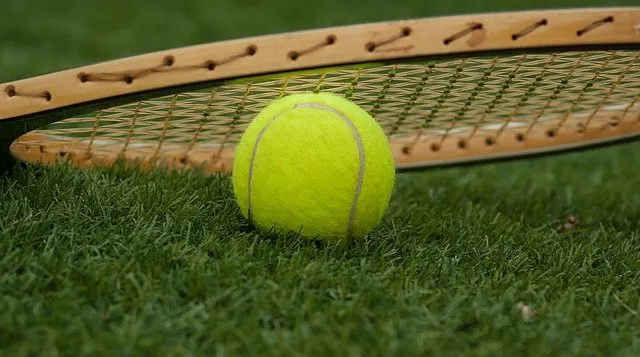
The humble little tennis ball has had quite a journey over the past few hundred years.
It’s changed quite a bit during this time, and it’s even been embroiled in political controversies.
Who invented the tennis ball?
Charles Goodyear is credited with inventing the first rubber tennis ball.
He was involved in the rubber industry, focusing on rubber tires and other products, and was a pioneer in developing vulcanised rubber. The ball was made from vulcanised rubber and it had felt stitching on the outside.
Later on, John Moyer Heathcote experimented wrapping the rubber tennis balls in flannel and in 1882, Walter Wingfield, one of the pioneers of lawn tennis, started using tennis balls wrapped in cloth.
When was the tennis ball invented?
The origins of the modern day tennis ball can be traced back to the 1870s, when lawn tennis replaced real tennis. It was also around this time that vulcanised rubber became more popular.
Lawn tennis was popular in England, but a lot of the tennis balls were imported from Germany, as they had become very successful at making a vulcanised rubber ball filled with air. These balls were generally a light or red colour.
History of the tennis ball
Before lawn tennis, there was real tennis.
This game was also known as the “sport of kings” as it was mainly played by royalty and noblemen. Its origins can be found in England in 1400s, but it was also popular in France and across Europe.
Real tennis used a ball made from cork with fabric tape wrapped around, and a layer of woollen cloth. The ball bounced less than the tennis balls we use today and it was slightly heavier.
It was only when lawn tennis became popular that vulcanised rubber was used to make tennis balls and this formed the foundation of the modern day tennis ball.
When were tennis balls white?
Although we’re used to playing with fluorescent yellow tennis balls, the tennis ball has actually been white for most of its existence.
When real tennis was popular, white was the preferred choice and this continued in the late nineteenth-century with the advent of lawn tennis, partly because the ball was often wrapped in white cloth.
Tennis balls continued to be a white colour well into the twentieth-century.
As tennis became more popular and households started to buy televisions, the black and white screens were fine with the white colour of the tennis ball as everyone could see it clearly against the darker grass court.
When did tennis balls become yellow?
Tennis officials decided that the balls should switch to yellow in 1972.
The primary reason was that households had started purchasing colour television sets and the white ball was harder to see.
A certain Sir David Attenborough is often cited as getting the ball in motion (pardon the pun) for changing the colour of the tennis ball. In 1967 he was controller of BBC2 and pushed for the channel to broadcast Wimbledon in colour.
Other colours were trialled including fluorescent yellow, bright orange and pink, but yellow was the easiest to spot and that’s what we’ve had ever since!
However, not all the tournaments switched to the new yellow ball straight away.
The All England Club waited until 1986 to use yellow balls at Wimbledon.
Check out Borg vs McEnroe in 1981 Wimbledon final. You can see they’re still using white balls.
In more recent years, the US Open changed the hard court colour to blue to help spectators and TV viewers see the yellow ball.
Tennis ball controversies
Politics rears its head in all walks of life and even the tennis ball has been affected!
Here are some of the events over the years where the tennis ball has been involved:
- Tennis balls were in very short supply during the Second World War. This was because around 90% of all rubber production went towards supplies for war equipment.
- In 2016, during a Republican convention, 72 kinds of weapons and gadgets were banned, including tennis balls.
- England temporarily banned the import of tennis balls in 1463 following an Act of Parliament – Exportation, Importation and Apparel Act
- In 1480, Louis XI of France prohibited filling tennis balls with sand, sawdust, earth or chalk. Apparently, they had to be made of leather stuffed with wool.
